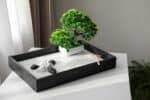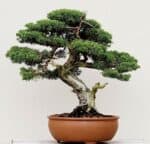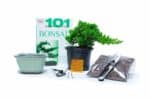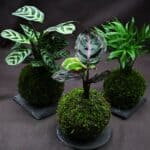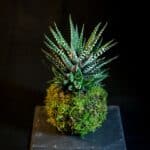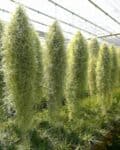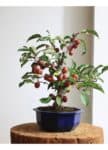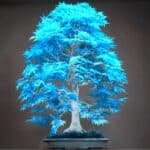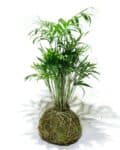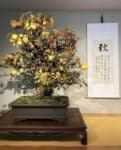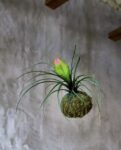The creation and maintenance of a kokedama plant is considered quite an accomplishment. It is then no surprise that seeing your plant wilt and wither can be heartbreaking. This article aims to educate you on the reasons why your kokedama plant might be dying.
So why is your Kokedama dying? Due to its somewhat delicate nature, several factors like under-watering and overwatering, using the wrong type of soil, insufficient light sources, inappropriate temperatures and lack of nutrients can cause your kokedama to die. Your kokedama plant might also be affected by the type of plant being grown in the kokedama ball, the moss used to create the kokedama ball and even outside sources, such as insect infestation.
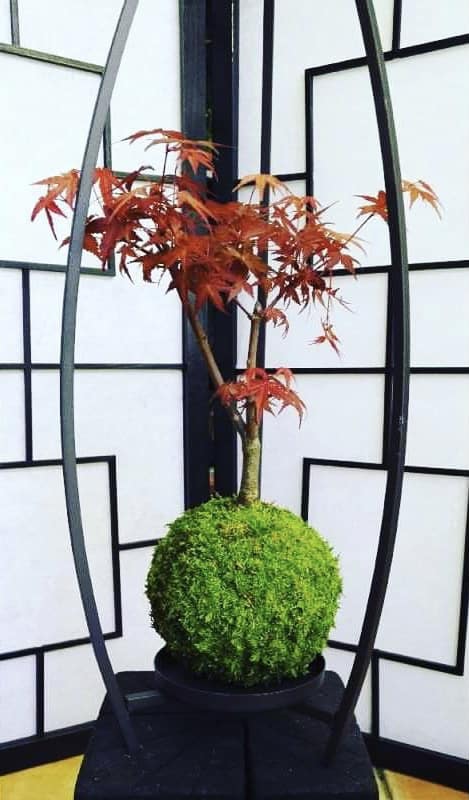

This article aims to help you to identify the factor that is affecting your kokedama plant. It will also explain how to correct the problem and if possible, save your plant before it is too late.
Here’s my guide on Everything You Need to Make Your Own Kokedama At Home.
Type Of Plant
The very first factor that will affect the survival of your kokedama plant is the type of plant being grown. While it might be true that most plants can be grown in a kokedama ball, the truth is that certain plant types are less suited to this form of gardening.
Trees and shrubs are some of the most demanding types of plants to use as a kokedama. Often these plants will initially appear to thrive before their leaves and branches begin to turn brown. This is usually an indication that your kokedama has become rootbound.
It is quite simple to fix this condition. You only need to re-pot your plant, or in the case of your kokedama, rebind the plant to give it more room to grow. However, as your tree grows, this problem will reoccur.
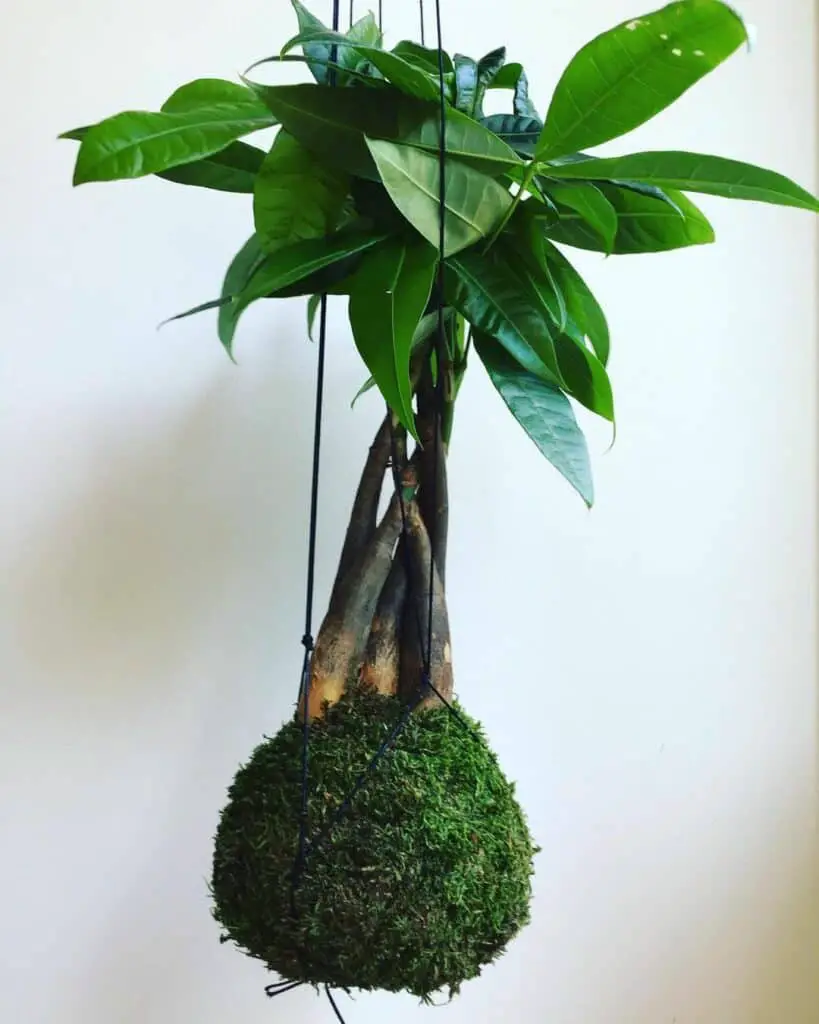
Thus instead of an easily maintained kokedama, you might find yourself repeatedly trying to save your plant from an early death.
To completely avoid situations such as this one, it is suggested that you carefully select the type of plant used for your kokedama.
The best type of plants to use as a kokedama are cacti, closely followed by most succulents. Cacti do not need much maintenance and are hardy enough to tolerate the kokedama process without much fuss. Also, the fact that succulents store water in their leaves which allows them to live in harsh conditions means that it is highly unlikely that a stint in a kokedama will manage to damage them.
Other plants that serve well as a kokedama include ferns, herbs and in some cases tropical plants.
Type of Moss
In the case of your kokedama plant, not all moss is created equal. The type of moss that your use to create your kokedama ball is extremely important as it might mean the difference between a thriving plant and a plant that is on the brink of dying.
If your plant’s leaves are wilting or discoloured, but your moss ball is green and lush, you might be dealing with root rot. This is because the moss is storing water in your kokedama which is in effect drowning the roots of your plant. Root rot will only lead to further wilting of your plant’s leaves until the roots become too damaged to function, at which point your plant will die.
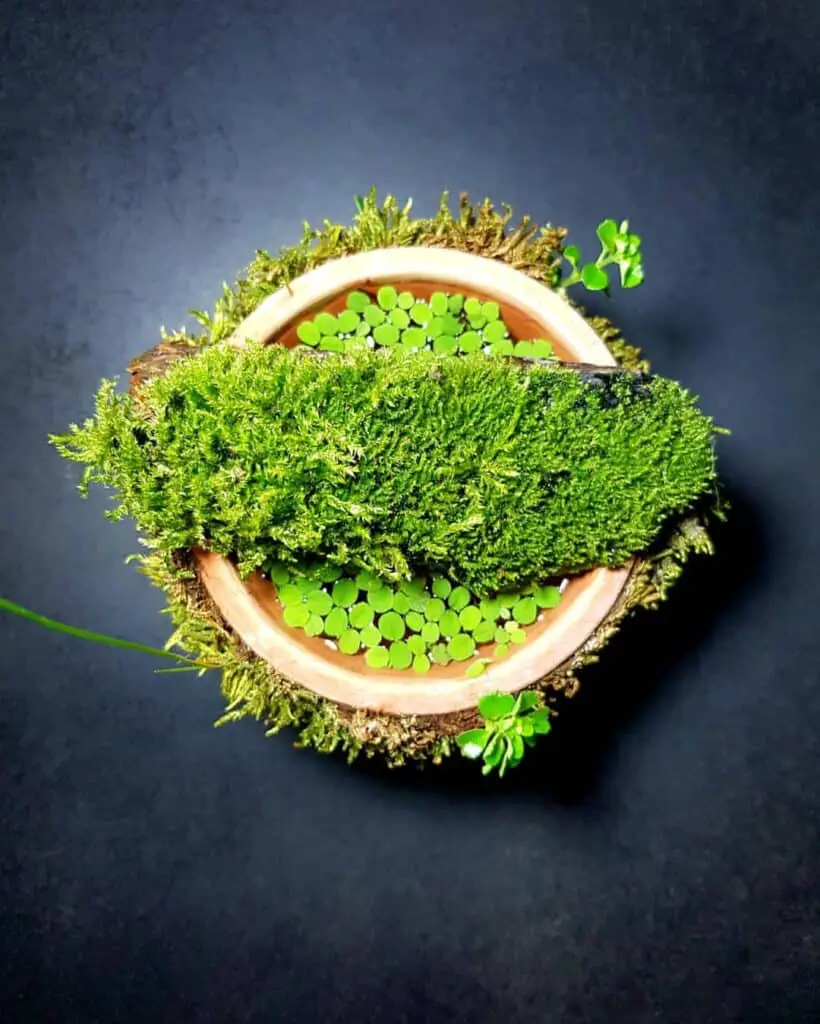
To fix such a situation, you will need to rebind your kokedama plant, removing your old moss and trying again with a new form of moss.
The moss used for your kokedama can be either fresh or dried but it is more advisable to use dried moss. The dried moss can be artificially coloured to ensure that you maintain the lush green look that is seen on many displayed kokedama plants.
Using Sphagnum peat moss is also recommended as it carries many advantages. Sphagnum peat moss is not only cheap, but it also helps sandy soil to retain moisture while providing drainage for clay soil. Also, its low pH makes it perfect for acid-craving plants.
Inappropriate Temperatures
Due to the fact that a kokedama can be created from a wide variety of plants, it is essential that you correctly identify the native temperature of the plant being grown. Tropical plants will require warmer conditions whereas temperate plants will prefer cooler temperatures and may need to be exposed to the outside.
Kokedama created from tropical plants will not only require more heat than its temperate counterpart, but it will also require more humidity. If your tropical kokedama begins to wilt and quail during the winter months, then it is likely that it isn’t getting as much heat as it needs.
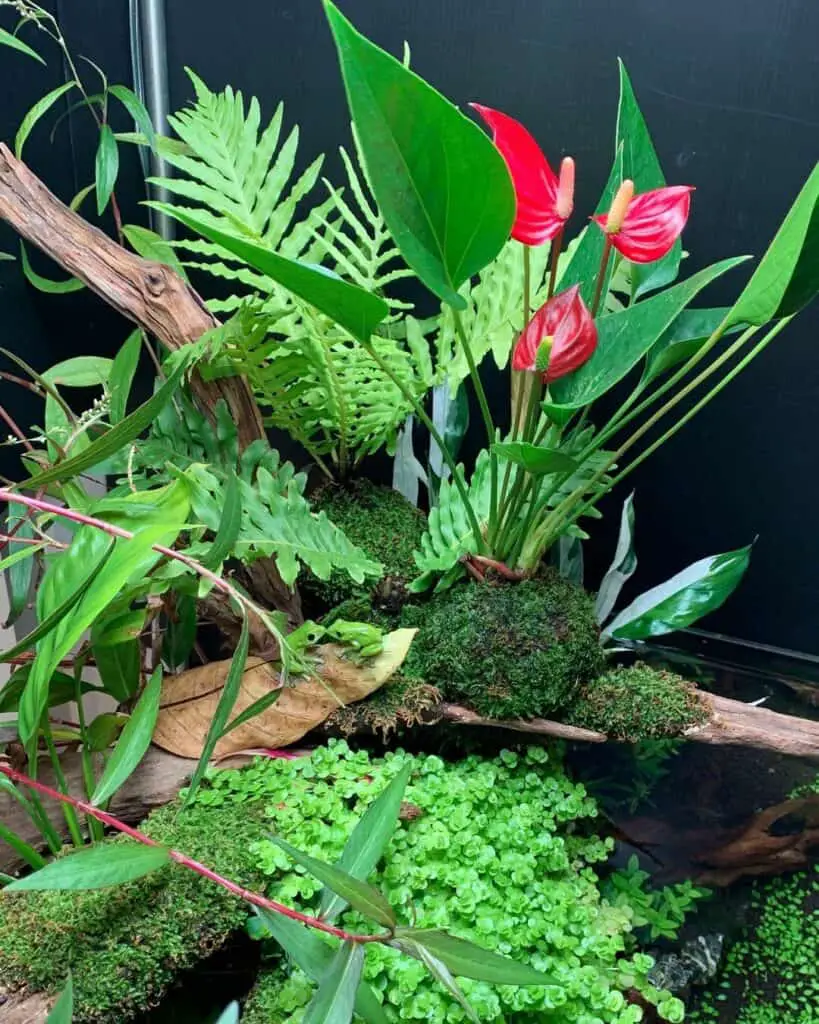
In addition to warmer temperatures, your tropical kokedama will require higher levels of humidity. To achieve this, you can either purchase a humidity tray or mist your kokedama ball several times throughout the day. You must be careful so as not to oversaturate the ball because this can cause problems for your plant’s root system.
In the case of temperate plants, it is suggested that you allow them some exposure to the outside. This can easily be accomplished by hanging your kokedama near windows or doors. Temperate plants that are not exposed to the outdoors may start to look lacklustre, they may also develop yellowing leaves.
This is because the plant has not had its period of normal dormancy. To rectify this issue, you may sometimes like to leave your kokedama outside but only where it is feasible. If the temperature is too harsh for your plant’s survival then limited exposure should do the trick.
Irrespective of whether your kokedama is tropical or temperate, it is important that you remember that due to the ball structure, the roots do not have much protection. This means that highly elevated temperatures can lead to your plant drying out much more quickly than plants in a pot. So while you are taking care to make sure your tropical plant is warm enough, be careful to never let it overheat.
Insect Infestation
If your kokedama plant is being suitably cared for but still showing signs of distress such as yellowing leaves and stunted growth, you might have an insect infestation. Much like their pot-dwelling counterparts, your kokedama is vulnerable to insect attack. Pests such as gnats, aphids and mealybugs can cause irreparable damage to your kokedama plant and you must catch the signs of an infestation early.
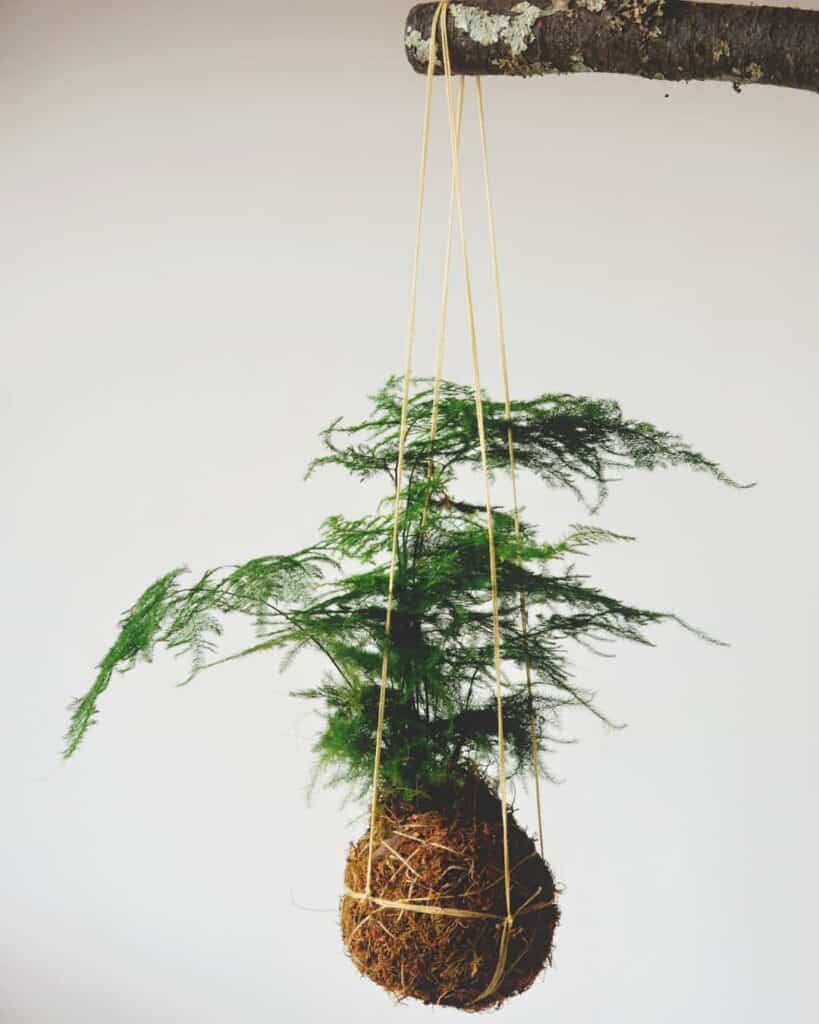
Kokedama balls created with living moss may sustain a level of moisture in the soil that is particularly attractive to Fungus gnat larvae. These insects lay their eggs in moist soil where the hatched larvae will feed on your plant’s root hairs.
To get rid of these pests it is suggested that you keep your soil dry, which might mean rebinding your kokedama ball with dead moss and altering your watering schedule. Alternatively, you can treat your soil with biological pesticides.
Root aphids drain nutrients from your plant’s roots causing the leaves to wilt and become discoloured. To get rid of Root aphids, you may need to take your kokedama ball apart and allow the soil to bake. You can also treat the soil of your plant with a neem oil spray or in worst-case scenarios, you might have to get rid of the plant completely.
If your kokedama plant appears droopy and lacklustre, you might be dealing with Root Mealybugs. To find out if your kokedama is infested with Root Mealybugs, you will need to take the ball apart and examine the roots. These pests will leave a white, wax residue on the roots of your plants.
To get rid of Root Mealybugs, you can either soak the roots of your kokedama plants in 120-degree water for at least ten minutes to kill the infestation. After this, you should rebind your kokedama ball with sterile soil to prevent a re-infestation.
Insufficient Nutrients
You must remember that your kokedama plant, much like any other plant, requires certain nutrients to survive. However, unlike plants that exist in the wild, your kokedama relies on you to provide these nutrients.
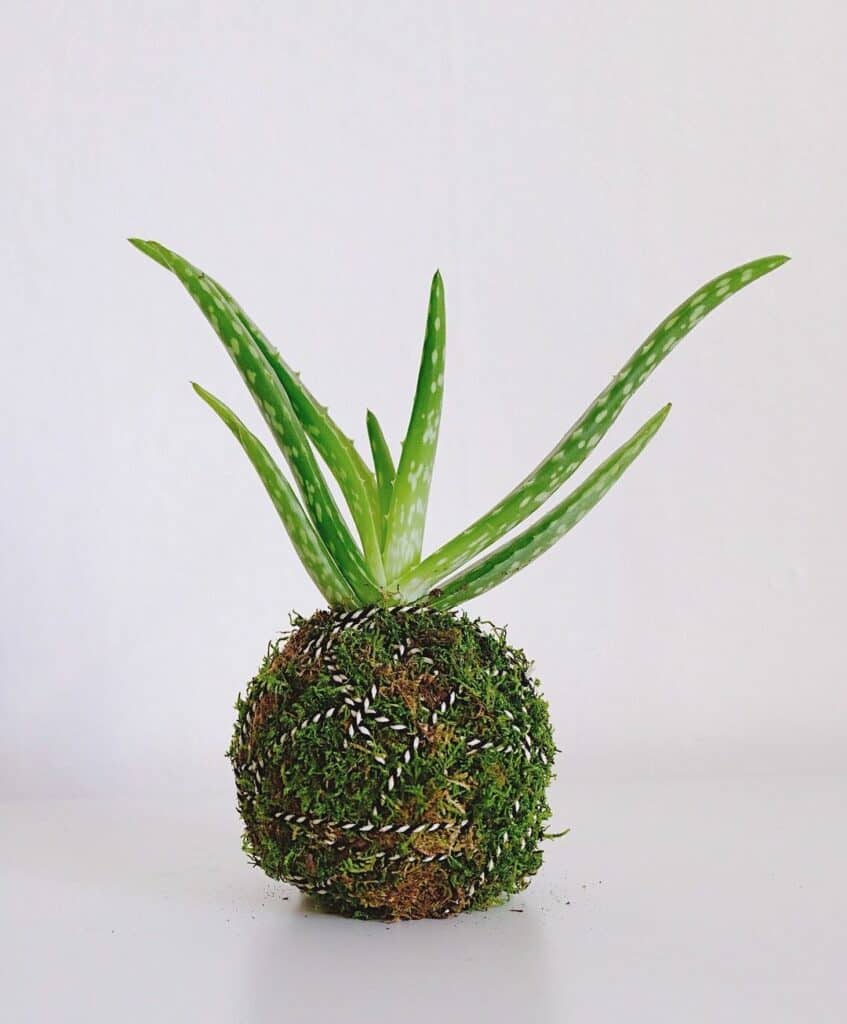
Plants require both macro and micronutrients to thrive, and dependent on the deficiency experienced your kokedama will display several symptoms.
Yellow leaves on your kokedama plant, especially during the spring months, can be an indicator of a Nitrogen deficiency. To combat this, you may either add nitrogen-rich fertilizers to your plant’s soil or you can simply mulch with organic matter.
If your kokedama plant’s growth has significantly decreased and it is displaying dull yellow leaves, then your plant might be experiencing a phosphorous deficiency. To correct this issue a bone meal fertilizer should be added to your kokedama ball.
If your kokedama plant is one that is acid-craving and it is displaying leaves with brown tips and yellowing around the leaf veins, then you could be dealing with an iron deficiency. Such an issue can be remedied by applying any store-bought iron treatment to the soil of your kokedama ball.
Kokedama plants with purple-hued or yellow leaves could be experiencing a potassium deficiency. A simple remedy for this situation would be to apply a potassium fertilizer to your plant’s soil.
Other nutrient deficiencies in your kokedama plant might be more difficult to spot and sometimes it is quite easy to confuse one nutrient deficiency with another. It is therefore very important that you make sure that your kokedama ball is treated to nutrient-rich fertilizers from time to time to prevent this matter from ever arising in the future.
Insufficient Light
Your Kokedama plant cannot survive with insufficient light. While it is tempting to simply place your kokedama ball in places that create an aesthetically pleasing picture, whether indoors or outdoors, you must take into consideration your plant’s health.
Plants require light to undergo photosynthesis, and your kokedama plant is no different. Insufficient light creates a host of problems for your kokedama plant that will eventually lead to death if the situation is not rectified.

One of the easiest ways to know if your kokedama plant isn’t getting enough light is by simply looking at the colour of your plant’s leaves. Most plants have dark green leaves which is due to the mechanisms of chlorophyll inside the plant’s system. Kokedama plants whose leaves begin to change from dark green to a lighter green before eventually becoming yellow and falling off might simply be lacking light exposure.
Insufficient light may also cause another strange reaction in your kokedama plant’s leaves. If your plant increases the space between each leaf this could be yet another indicator that your kokedama plant requires more light. This is known as an extended internode.
Kokedama plants that begin to grow smaller and thinner leaves is another indication that your plant requires more light.
Leaves aren’t the only part of your kokedama plant that will react to a lack of light.
If your kokedama plant has suddenly stopped growing or if its growth has significantly slowed after no major change in plant care, you might consider that the culprit for this could be insufficient light. This is because, without the light needed for photosynthesis, your plant simply won’t have the energy to do much but try to survive.
Plants that are leaning in a specific direction is another way to tell that your kokedama requires more light. Much like plant roots will spread towards water, your kokedama plant’s leaves will try to grow towards the light in an effort to survive.
You must also remember that depending on the type of plant you have used for your kokedama, its light needs might vary. Tropical plants will usually require a higher light intensity than temperate plants.
There are several ways to address a light deficiency.
You can simply move your kokedama to an area where they are more exposed to the sun. You can also purchase artificial lights for your plants which can substitute for the missing sun rays. Also, if possible, you can simply leave your kokedama plants outside for periods of time.
Overwatering And Underwatering
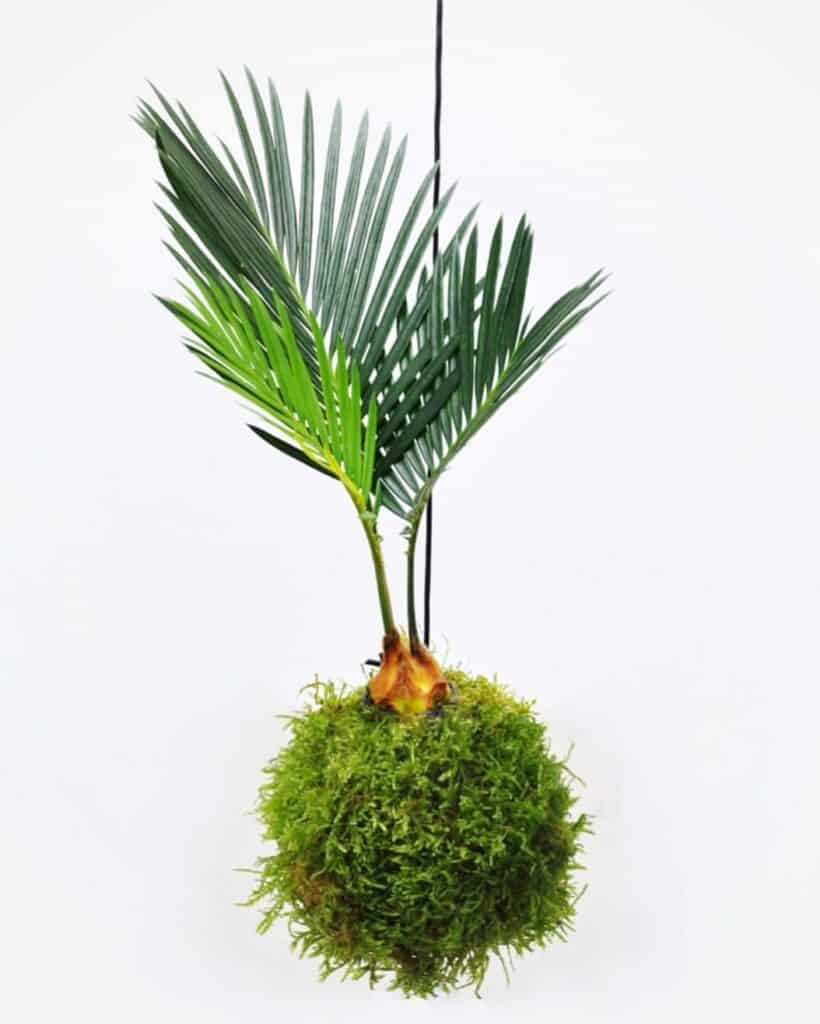
Contrary to what is believed due to the construction of your kokedama ball, you can overwater your kokedama plant. If your kokedama plant is experiencing yellow or brown leaves that eventually fall off, blisters on the leaves and stalk or slow growth all while the soil of your kokedama ball is still wet, then you might be overwatering your plant.
The signs of underwatering are quite similar to overwatering so it’s very easy to confuse the two. Though underwatering also causes dry, withered plants that will eventually die. To be sure, checking the soil is the best way to determine what is affecting your plant.
Overwatering can cause root rot, mould and encourage insect infestation. Whereas underwatering simply causes your plants to wither and die after a period of shedding.
To prevent overwatering and underwatering, always check your soil before watering your kokedama plant. Using dry moss will also help to prevent overwatering as living moss often gathers water in the soil around it. And soaking your kokedama ball in water for 10-25 minutes dependent on your plant’s needs will help to overcome the issue of underwatering.
Type Of Soil Mix
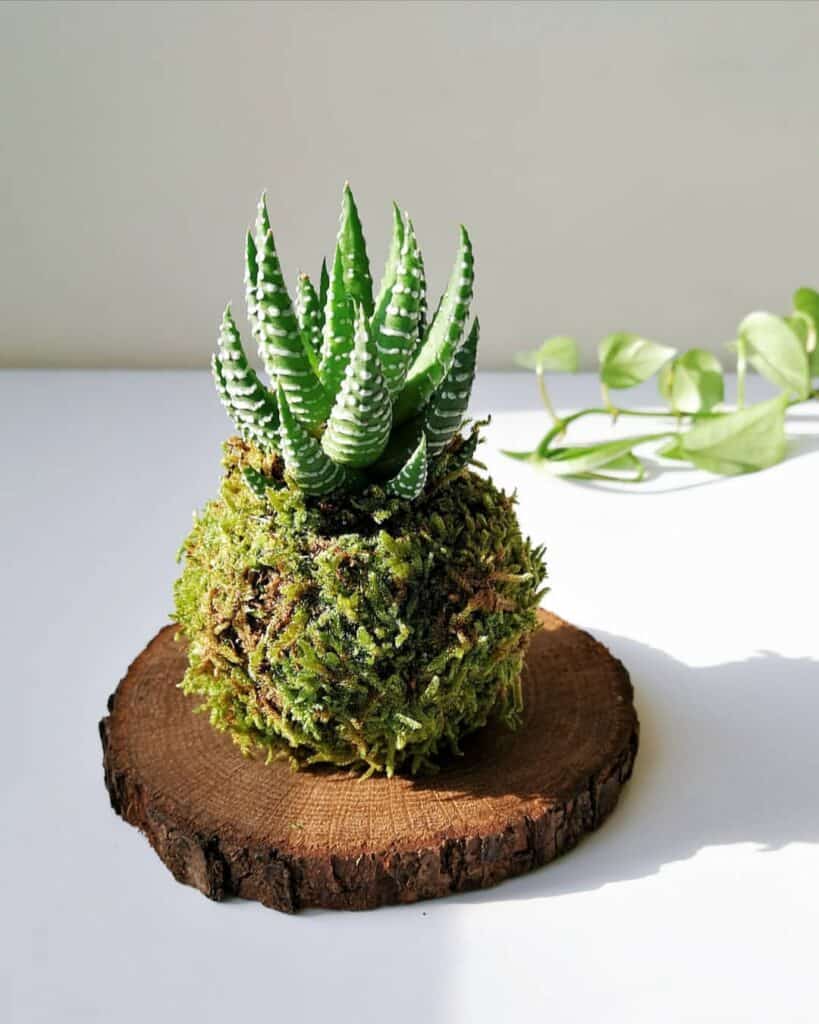
The soil that is used to create your kokedama plant is extremely important. You must ensure that your plant’s root can access nutrients, water, drainage and air to encourage its continued existence. An unsuitable soil mix can cause your kokedama plant to fall victim to any and all of the factors previously mentioned.
To allow your kokedama plant the best chance at survival it is suggested that you create a soil mix aimed to meet all of your plant’s basic needs. If you have eliminated all of the previous factors and your kokedama is still not thriving it might be that your soil isn’t enough for your plant.
The basic soil mixture for a kokedama ball must include several things.
You should first have potting soil that is rich in nutrients to prevent any deficiencies that could stunt your plant’s growth, the soil should be sterilized to kill any harmful insects that may be lurking in it. To this, you should add either peat moss or coconut coir as a storage element that will capture water for your plant’s roots. Bonsai soil or clay can then be added to act as a binding agent that holds the rest of the mixture together.
After adding water you are encouraged to roll your soil mixture into a ball which you should then poke several holes into to ensure that your plant has a drainage system.
Conclusion
In conclusion, the creation and maintenance of a kokedama ball is not the easiest practice despite popular belief. And whilst the aesthetic presence of the kokedama might be a lure, you must be prepared to put in the work to help your plant to grow and thrive.
The most important thing for you to remember is that all your kokedama plant needs to survive is your time and effort.



